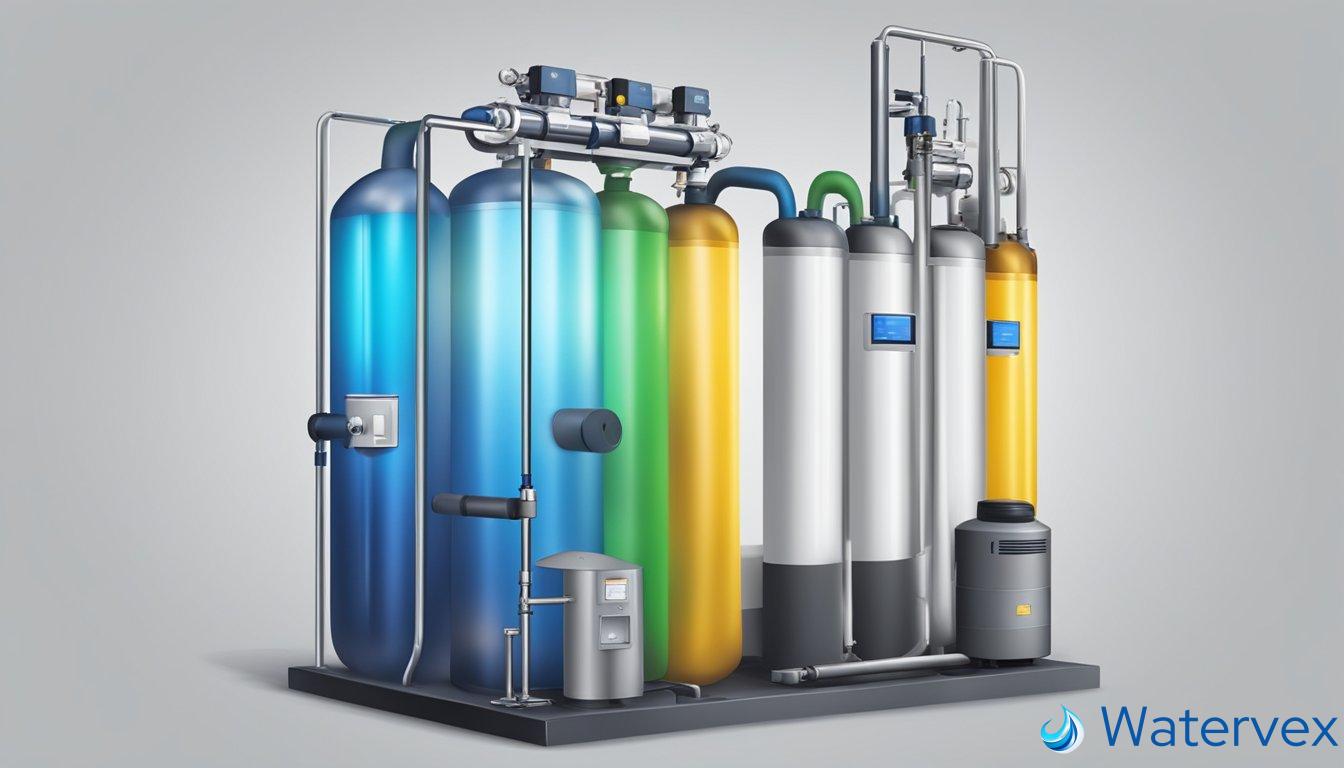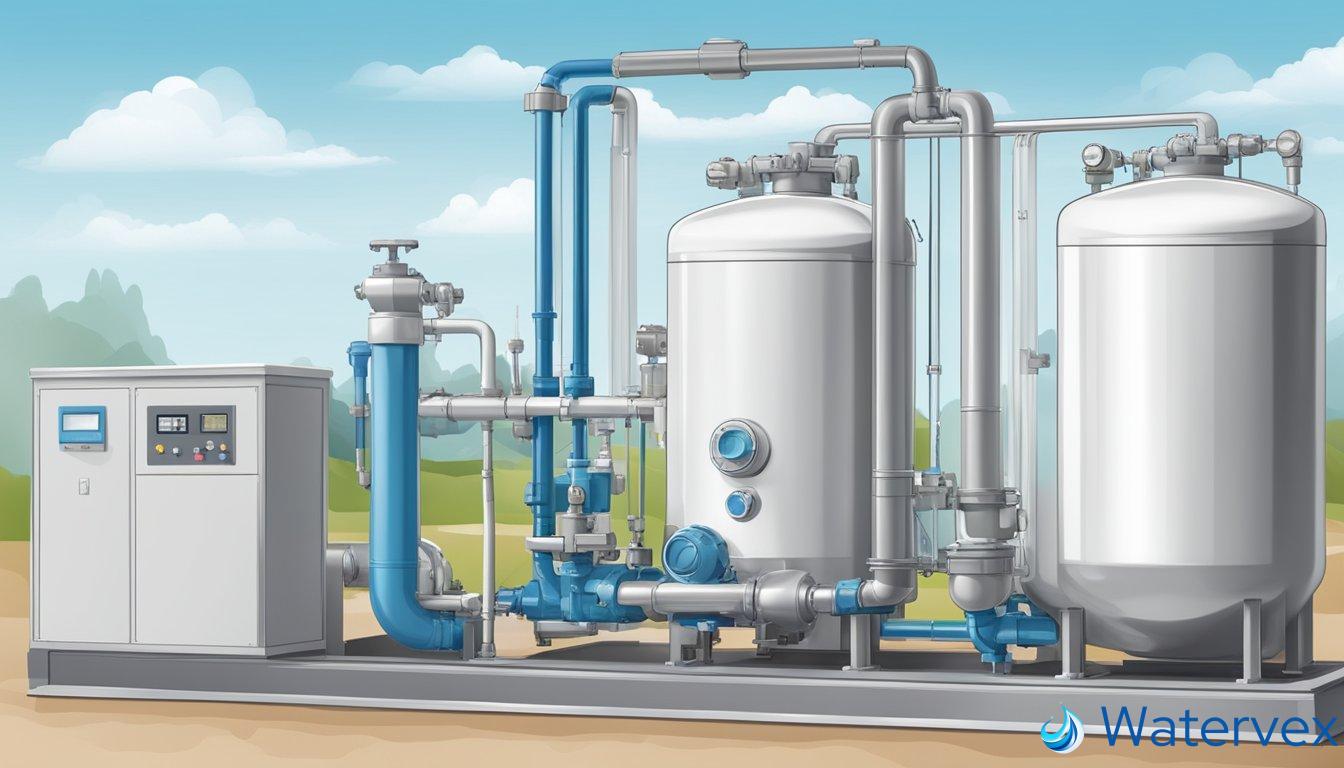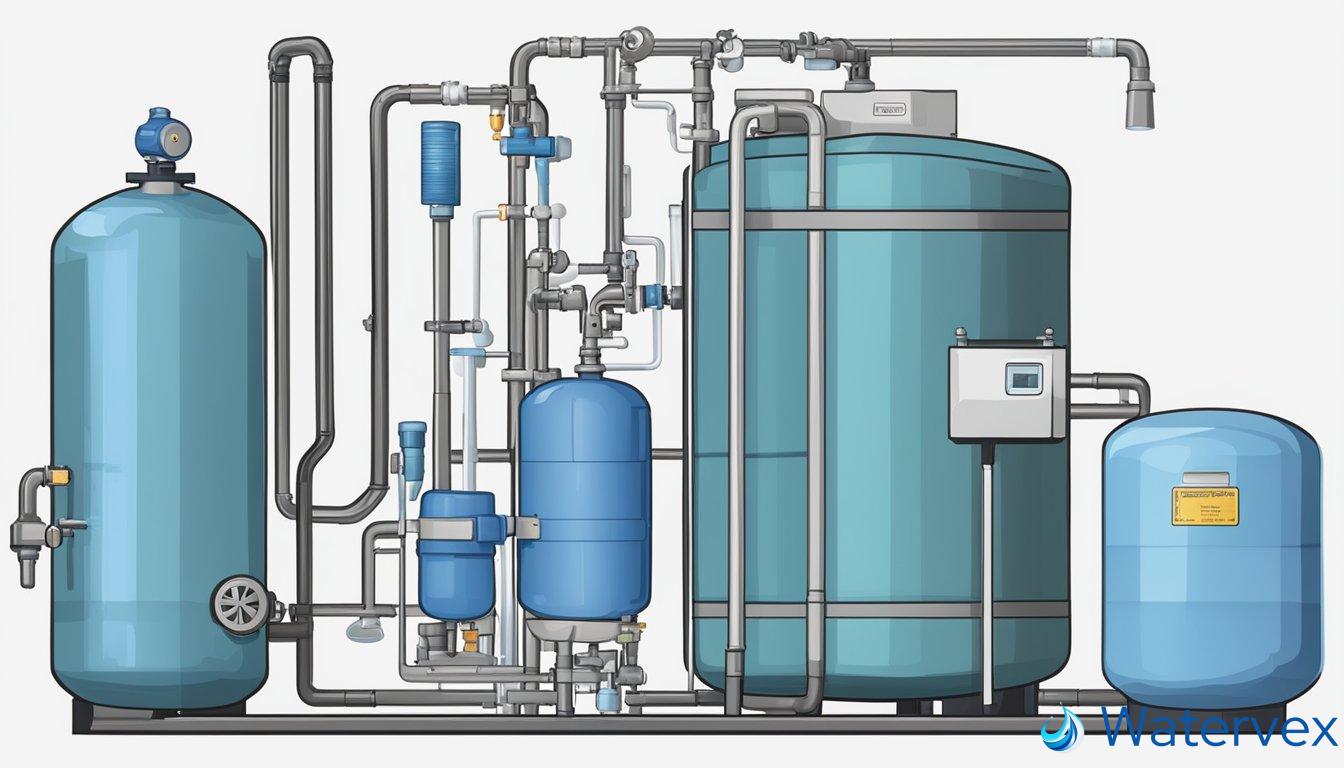When your home’s water softener enters its regeneration cycle, you may notice an assortment of sounds that could raise concern. It’s not uncommon for a water softener to produce noise as it flushes the hard water minerals from its system and replenishes the resin beads responsible for the ion exchange process. These noises, ranging from humming to gurgling or even a rhythmic clicking, stem from the normal operations of the motor, the movement of water, and the shifting of mechanical parts within the unit. Understanding what each sound indicates can help you ensure that your water softener is functioning correctly and efficiently.

Regeneration is a critical function of a water softener system, which ensures that the supply of soft water to your home remains uninterrupted. During this cycle, the system undergoes a series of steps that might produce distinct sounds. The sound of flowing water signifies the backwash phase, where water moves through the resin tank to the drain. The humming noise typically comes from the water softener’s motor, while the clicking can be attributed to the gears inside the control valve as they progress through different stages of the cycle. Correctly identifying these sounds as apart of the water softener’s normal routine can help reduce worries and prevent unnecessary maintenance calls.
Key Takeaways
- A water softener makes various sounds during regeneration, which are part of its normal operation.
- Recognizing the sounds from your water softener can assure you of its proper function.
- Knowing what noises to expect helps distinguish normal operational sounds from those that might indicate a need for maintenance.
Understanding Water Softener Noises
When your water softener enters its regeneration cycle, certain sounds are normal, but others may signal an issue. Differentiating between the two ensures your system operates effectively without cause for unnecessary concern.
What Normal Sounds to Expect
During water softener regeneration, expect to hear a few characteristic sounds. You’ll typically hear the sound of running water as the system cycles the water through to flush out the hard minerals. This is akin to a soft rushing or trickling that occurs at predictable intervals, determined by your timer or usage. Additionally, a low humming from the motor and clicking from the control valve and gears are standard as they work together to move water and regenerate the resin beads.
- Rushing Water: Soft, consistent sound marking the passage of water
- Humming: Steady noise from the motor in action
- Clicking: Occasional sounds from the control valve as it changes position
Identifying Unusual Noises
Hearing something out of the ordinary? Unusual noises such as banging, hissing, persistent loud humming, or an alarm from your unit can indicate potential problems. Banging might suggest air in the pipes or a water hammer effect, whereas hissing could be a sign of a leak or valve issue. Alarms are typically integrated into the water softener to alert you of malfunctions like low salt or other maintenance requirements.
- Persistent Loud Humming: May reveal an overstressed motor.
- Banging or Thumping: Often related to air in the system or water hammer.
- Hissing: Indicates a potential leak or pressure issue.
- Alarms: Warning system for malfunctions or maintenance needs.
Recognizing the difference between regular operational sounds and those signaling the need for maintenance is key to achieving peace of mind with your water softener’s performance.
Components and Their Role During Regeneration

When you hear your water softener during the regeneration process, it’s a symphony of components working in harmony to remove hardness minerals from water. Let’s peek into the intricate dance of parts and stages that make this happen.
Key Parts of a Water Softener
- Resin Tank: Houses the resin beads that capture calcium and magnesium ions, the culprits behind hard water.
- Brine Tank: Stores a brine solution which is essential during the regeneration cycle to recharge the resin bed.
- Control Valve: Manages the flow of water and cycles of regeneration, operating in either time-initiated or demand-initiated modes.
- Drain Line: Carries waste water and flushed out minerals during the backwash and brine rinse stages.
Resin is at the heart of the softening process, capturing hard water minerals until it gets saturated. Then the brine tank steps in. It’s like a pit stop for the resin tank where it ‘refuels’ with the brine solution. The control valve, acting as the orchestra conductor, directs the flow rate, ensuring the right frequency and cycles for efficient regeneration.
Stages of the Regeneration Cycle
- Backwash: Water runs in reverse through the resin tank, loosening sediment and debris. Trickling water and rumbling may be heard.
- Brine Draw: The brine solution from the brine tank flows through the resin bed, and the sound of a slow brine trickling could echo.
- Slow Rinse or Brine Rinse: A steady flow washes over the resin beads, removing brine and trapped minerals. A flushing noise is usual here.
- Fast Rinse: A fast flow of water ensures all sediment and excess brine are flushed out. Expect the sound of rushing water and sometimes clicks from the valves.
- Brine Refill Cycle: A quieter stage, where the brine tank refills to prepare for the next cycle.
During regeneration, noises like water rushing, humming motors, and clicking gears mean your water softener is doing its job. If you notice it’s stuck in regeneration with endless trickling or rumbling, check the components; your system may need attention to resume automatic, efficient operation. Regeneration noise can indicate a healthy system but stay alert for any irregular sounds that signal maintenance needs.
Maintenance and Troubleshooting Tips

Ensuring your water softener functions quietly and efficiently involves regular maintenance and understanding when to tackle issues yourself or call in the pros.
Preventing and Addressing Common Issues
A well-maintained water softener shouldn’t be noisy during regeneration. Here’s how to prevent and address common issues:
- Salt Levels: Check the salt levels monthly; too low, and your system won’t regenerate properly, too high could lead to salt bridges.
- Salt Bridges: These hard crusts form in your brine tank, creating a space below that stops salt from coming in contact with the water, preventing proper regeneration and can cause noise. Gently break up salt bridges with a broom handle.
- Regeneration Frequency: Adjust the regeneration frequency to match your water consumption, which can vary from the system’s preset schedule. This ensures a balance between efficiency and wear on your system.
- Water Hardness Level: Measure your water hardness level to adjust the settings on your water softener accordingly, reducing strain and noise.
- Filter and Resin Bed: Check for and clear any blockages from sediment or minerals; these can cause low water pressure and impede the ion exchange process.
If your system is electric, inspect the control panel for any error messages and check the user manual or manufacturer’s video tutorials for troubleshooting.
For a non-electric water softener, it’s important to ensure the mechanical parts are functioning properly. They tend not to have a complex control panel, but the basic clock and regeneration settings should be checked for accuracy.
When to Seek Professional Help
When basic troubleshooting doesn’t resolve the noise, it’s time to seek professional help:
- If you notice constant low water pressure, despite clearing any apparent blockages or sediment build-up.
- When there’s a persistent loud noise that doesn’t subside after checking for and resolving common issues like salt bridges or incorrect salt levels.
- If the unit’s control panel is unresponsive or displays an error you can’t rectify with the user manual.
- Should the noise accompany water that tastes salty or feels either very hard or too soft, indicating a possible failure in the ion exchange process.
Remember, timely intervention by a professional can prevent the need to have your system replaced altogether, saving you time and money in the long run. If you’re ever in doubt about a noise or issue, a quick call to customer service can provide guidance or peace of mind.

